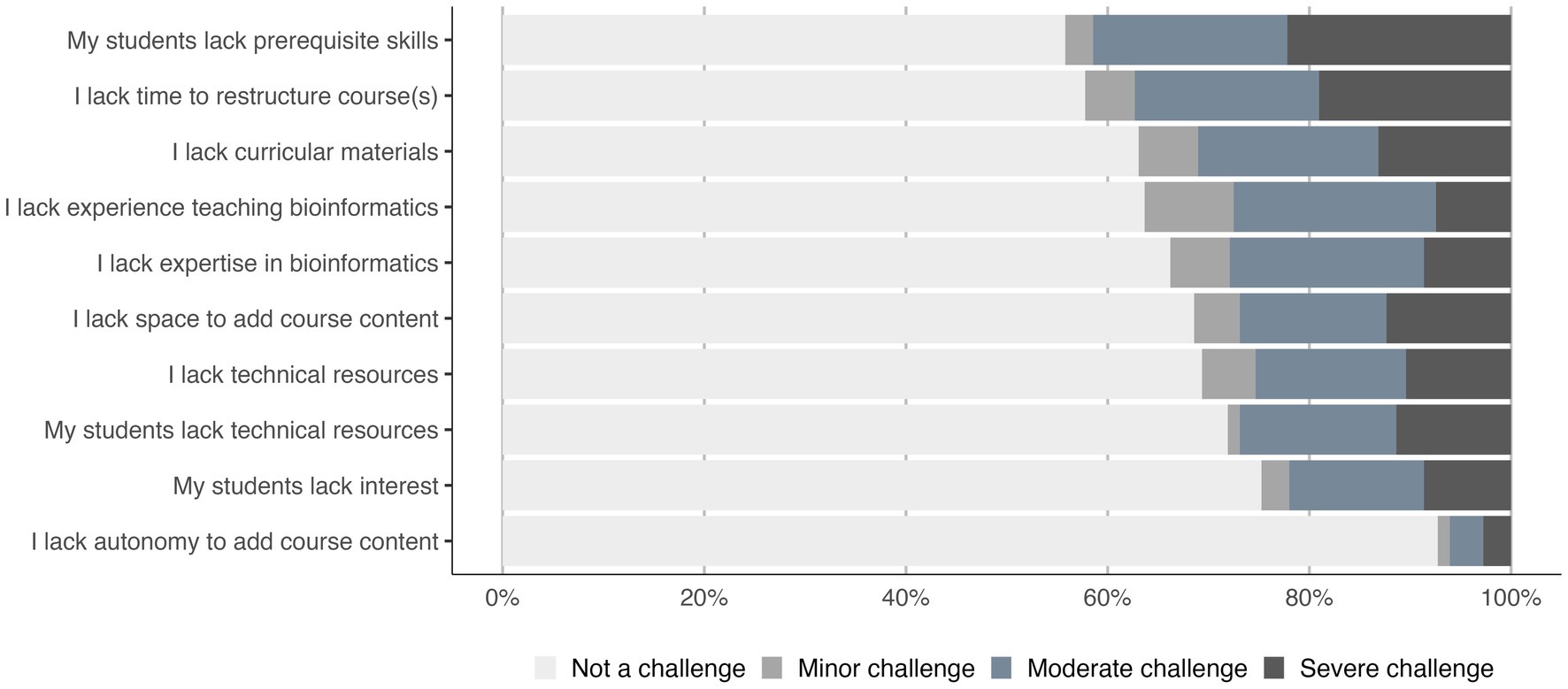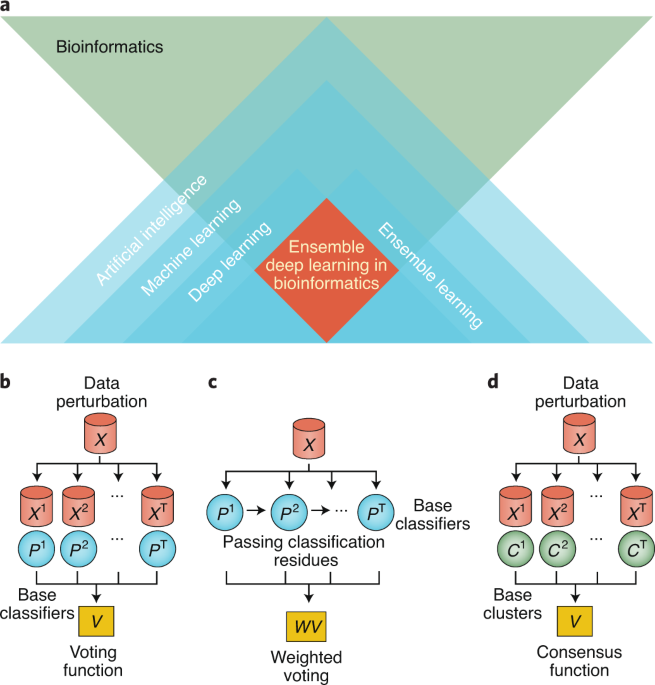See This Report on Bioinformatics Tutor
See This Report on Bioinformatics Tutor
Blog Article
The smart Trick of Bioinformatics Tutor That Nobody is Discussing
Table of ContentsNot known Details About Bioinformatics Tutor The smart Trick of Bioinformatics Tutor That Nobody is Talking AboutBioinformatics Tutor Fundamentals ExplainedNot known Details About Bioinformatics Tutor See This Report on Bioinformatics Tutor
Of the overall participants associated with the training, 80% were pupils from public higher education establishments, while the remaining 20% originated from personal institutions. To receive a certification of engagement, pupils were needed to attend at the very least 90% of the complete training hours. As a result of this requirement, an impressive 95% of the individuals efficiently obtained their certifications, having not only fulfilled the minimum attendance criteria yet additionally completed all appointed activities throughout the training.
During the elevation of the COVID-19 pandemic, specifically in between June and August 2020, the task team was charged with arranging specialized training in bioinformatics. This training was particularly focused on students from the research study group Center for Research study in Applied Computing at the Federal University of Pará (UFRA) The adjustment to remote knowing systems as a result of the pandemic produced a possibility to explore brand-new training methods and digital devices that improved both reach and performance.
To react to the growing need in the computing and life scientific researches areas, a sophisticated training course was presented in 2020 entitled Introduction to Artificial intelligence. This training course was created to provide an available yet thorough review of Expert system methods, specifically as used in bioinformatics. The program was carried out over 3 months, from October to December 2020, and was provided completely online with the Google Meet system. This digital layout enabled engagement from students across Brazil, a number of whom might not have had the possibility to participate in in-person sessions.
The 6-Minute Rule for Bioinformatics Tutor
A notable function of this course was its focus on hands-on knowing. About 50% of the total training hours were committed to useful tasks where trainees built intelligent versions and applications in a series of clinical domains, including genes, molecular biology, and ecological data evaluation. Commonly utilized devices and frameworks such as Spyder, Google Colab, Jupyter Notebooks, and Orange were integrated right into the coursework. These platforms enabled pupils to take part in real-time data control, design training, and algorithm experimentation.
Sixty of them were connected with numerous higher education institutions in the state of Pará, while the continuing to be twenty came from organizations situated in five various other Brazilian states. By introducing Artificial Knowledge in a relevant and practical context, the effort offered to link the gap between theory and real-world application, offering students with a strong structure for future research study or work in the field.
The training campaign developed part of a wider academic outreach effort known as the Bioinformatics when traveling task. This job has, throughout the years, presented dozens of trainees to the world of bioinformatics and computational biology. The events held under view this umbrella campaign have actually occurred across numerous areas and years, as summarized in Table 1 (Listing of occasions, places, years, and complete varieties of trainees and trainers)
Among one of the most remarkable results of the Bioinformatics on the Road initiative has actually been its payment to the development of decentralized research teams. Numerous of these groups, at first united by their participation in training events, have since taken place to generate independent clinical research study in partnership with regional academic institutions. The training not just cultivated clinical thinking within the context of bioinformatics but additionally stimulated collaborative partnerships that extended beyond the training setting. These cooperations have resulted in increased local scientific performance and contributed meaningfully to the advancement of the more comprehensive bioinformatics neighborhood in Brazil.
Some Known Factual Statements About Bioinformatics Tutor
The project itself was conceptualized and arranged by megabytes and RR, that looked after the preparation and application of each step. Lectures were delivered by a multidisciplinary group containing megabytes, FA, EF, KP, JS, DM, SN, LP, LG, IH, air conditioner, and rr. The very same team, excluding IH and RR, also acted as tutors for the sensible training components. Funding for the task was offered via the give 88887.200562/ 2018-00 from CAPES. The writers extend their gratefulness to every person who added to the understanding of this project, whether directly or indirectly, considering that its beginning.
The Federal College of Pará's Workplace of Research study (PROPESP/UFPA) additionally supplied financial backing, specifically for the manufacturing of the final manuscript. The authors state no commercial or financial disputes of interest that might have influenced the research study. In addition, all analyses and opinions expressed in this article are only those of the writers and do not always reflect those of their corresponding institutions, the publisher, editors, or reviewers involved in the publication process.

Our Bioinformatics Tutor Statements
From a pedagogical point of view, the training technique utilized in the training link was deliberately interactive. Courses were performed in a way that encouraged student participation and conversation, going beyond memorizing memorization to discover how concepts are developed, used in day-to-day life, and evaluated in scholastic settings. The instructional philosophy concentrated on supporting both strong and having a hard time trainees, providing personalized support, and building confidence via sustained mentorship and persistence.

Each group, containing around 36 individuals, was supported by three advisors-- most of whom were postdoctoral scientists with customized competence. These advisors not only assisted create the group jobs however additionally facilitated their execution, guaranteeing that each research study inquiry was both properly difficult and relevant. The objective was to provide a naturally practical context that participants might discover through flexible goals and access to curated datasets.
For additional understandings right into the approach and results of this project-based understanding method, visitors are directed to S1 Text, that includes detailed descriptions of the instructional structure, analysis methods, and job motifs used in the training sessions.
An Unbiased View of Bioinformatics Tutor
Of the total amount participants involved in the training, 80% were trainees from public greater education organizations, while the continuing to be 20% came from exclusive establishments. To certify for a certificate of engagement, students were needed to go to at the very least 90% of the overall training hours. Notably, beyond the pupils that registered in the training sessions, seven knowledgeable trainers participated in providing the courses, while 3 devoted research teachers coordinated the overall training process. About 50% of the total training hours were dedicated to sensible activities where trainees built intelligent designs and applications in an array of clinical domains, consisting of genetics, molecular biology, and environmental data analysis. The training not just promoted scientific thinking within the context of bioinformatics yet also triggered collective relationships that expanded past the training environment.
Report this page